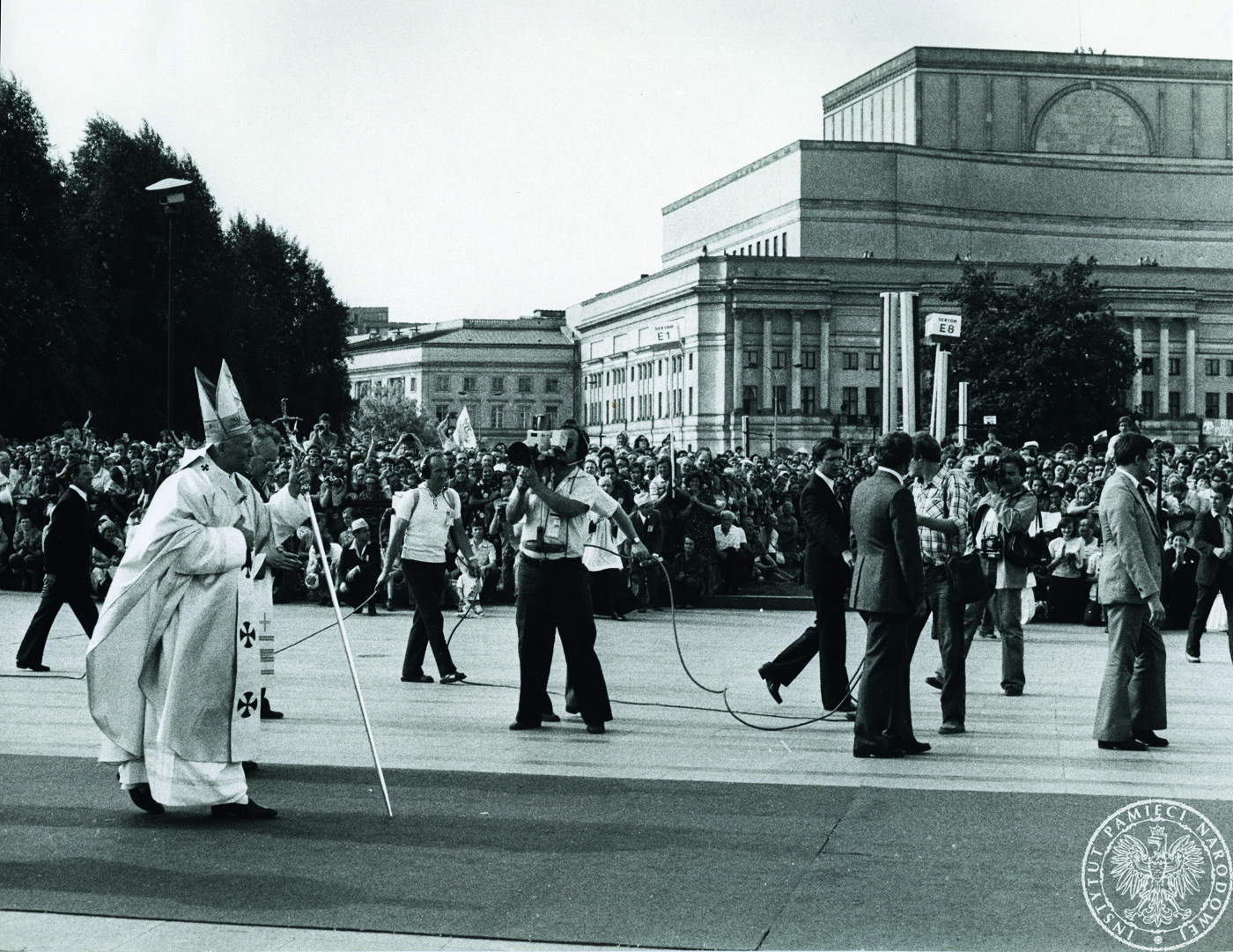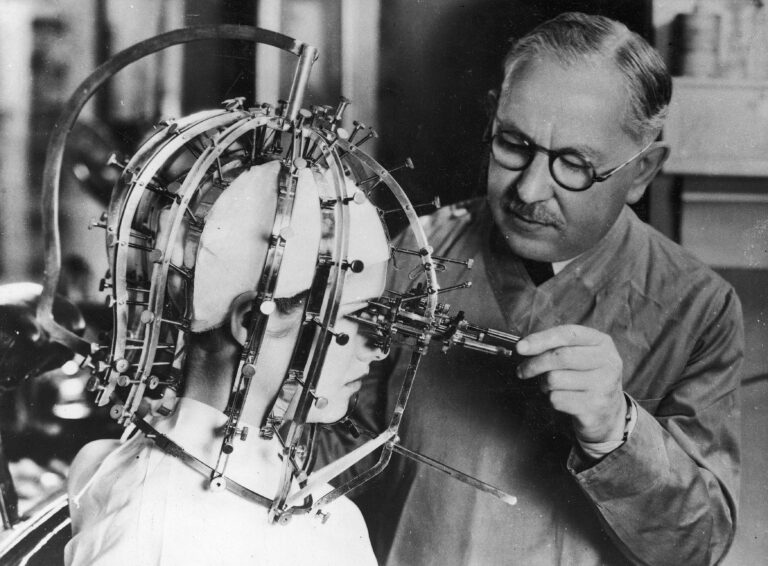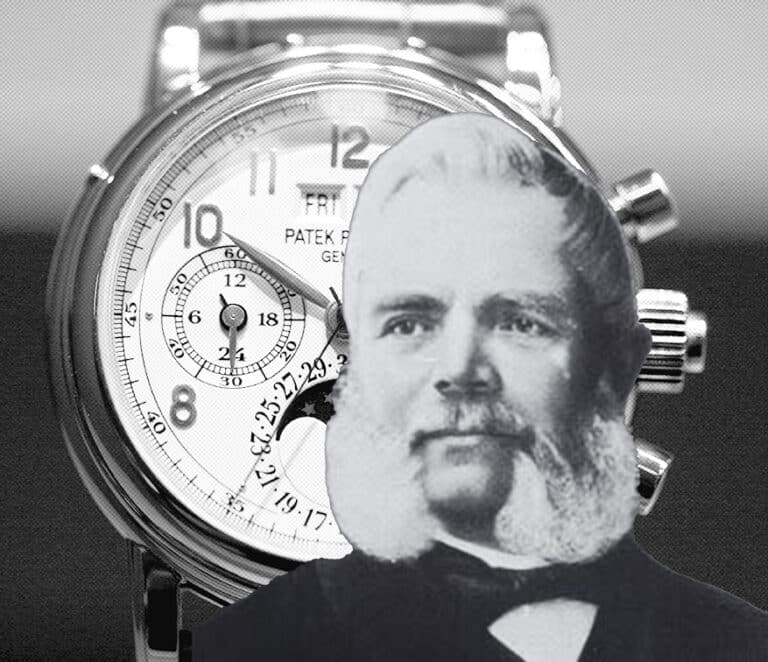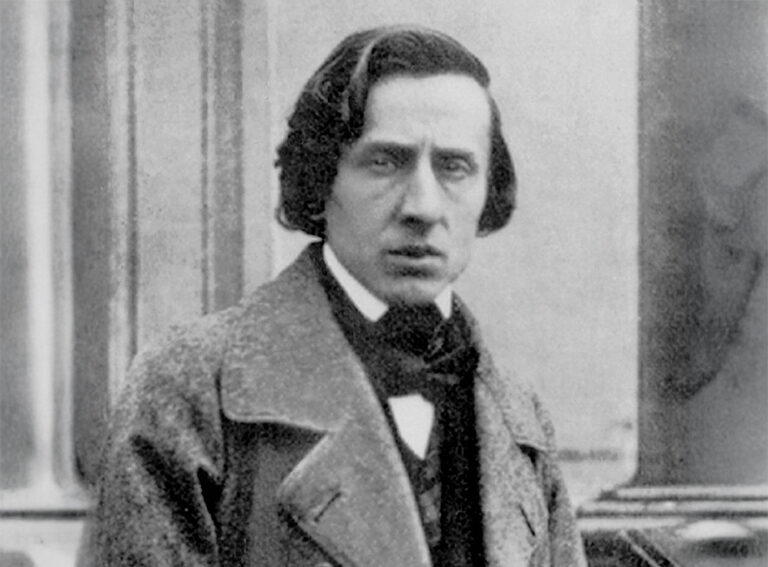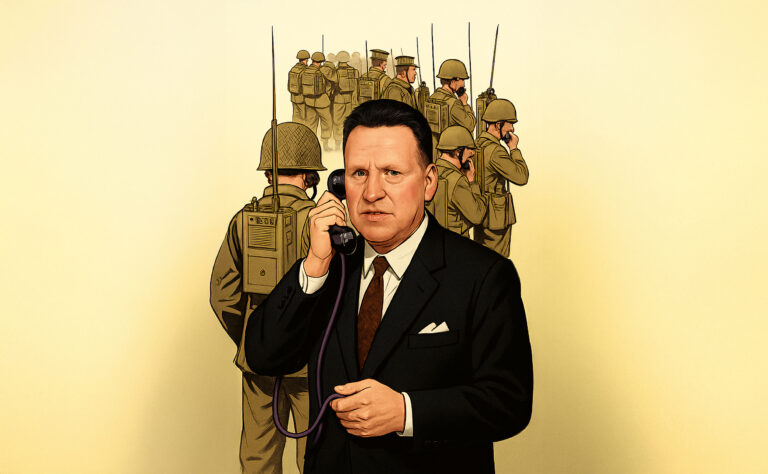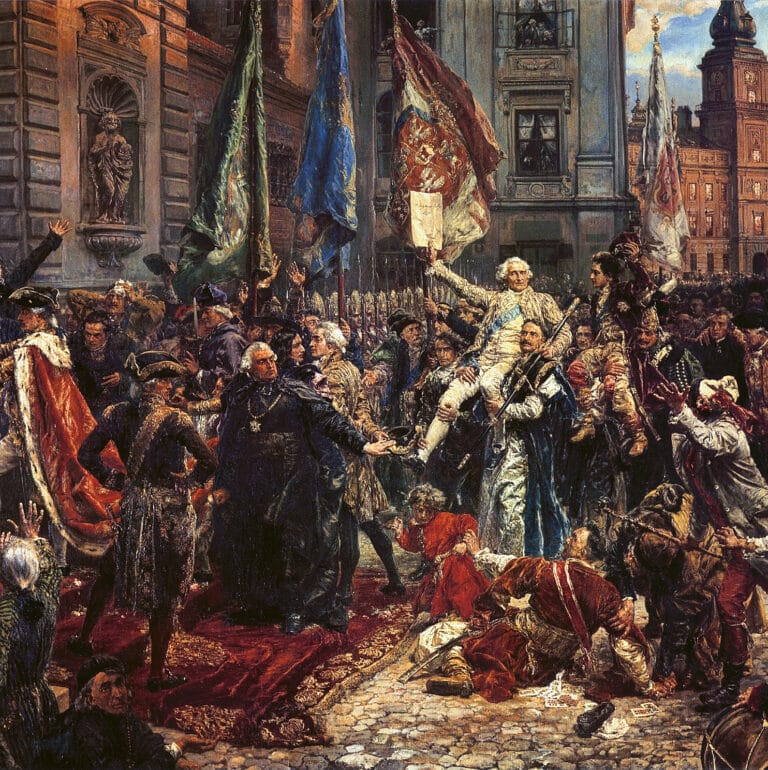The Great Days of Poland June 2–10, 1979
It is estimated that up to 10 million Poles took part in the meetings with John Paul II—more than one-fourth of the entire population of Poland. This was of great significance because Poles counted themselves and saw that they shared values and views—different from
those officially promoted by the communist authorities.
Everything began on the evening of October 16, 1978, in Rome. On that day, Cardinal Karol Wojtyła from Kraków was elected the new pope. While it was a major surprise for the world, in Poland the result of the conclave brought tremendous joy among the people—and great anxiety among the communist authorities. In terms of social life, the election of a Pole as pope is still regarded as one of the most important events in the country’s history. That day, Poland erupted with joy. The communist authorities, quite the opposite.
Since 1945, Poland—a Catholic country—had been ruled by communists who waged an open war against the Catholic Church. The most important politician at that time was the First Secretary of the Polish United Workers’ Party, Edward Gierek. Reportedly, upon hearing the result of the conclave that evening, he said to his wife: “A great day for Poland and great trouble for us.” After the initial burst of celebration subsided, it became clear that the Polish Church would want to organize a pilgrimage of the new pope to Poland. However, such a pilgrimage required approval from the communist authorities. The negotiations were very difficult. Edward Gierek had to consult with Moscow, where Leonid Brezhnev was in power at the time.
Following Poland’s Capitals
Ultimately, the pilgrimage was scheduled for June 2–10, 1979. Every Polish city wanted to host the pope. However, it was decided that John Paul II would visit the most important cities: Warsaw, Gniezno—the oldest capital of Poland, Częstochowa—home to the most important Marian shrine in Poland, Jasna Góra, Kalwaria Zebrzydowska—a town with a Way of the Cross modeled on the Via Dolorosa in Jerusalem, John Paul II’s hometown Wadowice, Kraków, and the former German concentration camp Auschwitz-Birkenau. While spending two days in Kraków, the pope also visited Nowa Huta—a district built after the war as a communist city meant to be church-free, where residents literally fought to have a church built—and Nowy Targ, a well-known „highlander town” in Poland.
While those cities were preparing for the papal visit, Moscow was pressuring the authorities in Warsaw to withdraw the invitation. Just a few days before the pope’s arrival, Leonid Brezhnev told Edward Gierek to contact John Paul II and ask him to cancel his visit to Poland under the pretext of illness. Gierek refused, arguing that nearly all Poles were Catholic and the arrival of the Polish pope was very important to them. He warned that if the visit was canceled, “people will take to the streets.” When Gierek refused to cancel the pope’s visit, Brezhnev said: “Do as you please, but make sure you and your party don’t regret it later.”
Before the visit, the communist authorities tried to pressure Church officials to, for instance, limit the number of admission cards for Masses and meetings with the faithful. Polish Television was forbidden from showing crowds and was instructed to film only elderly people in close-up shots, to suggest that the pilgrimage did not interest young Poles. The authorities provided the pope with a helicopter to reduce gatherings of people along the travel routes. The communists mobilized the entire security service, including their secret agents, to monitor the visit and people around the pope. During the pilgrimage, the authorities imposed nationwide prohibition. If they were hoping to stir up resentment among Poles, they failed. That was all they could do. The visit could not be canceled, and they had no control over what John Paul II would say.
Warsaw
When the plane with John Paul II landed at Warsaw’s Okęcie airport on June 2, 1979, at 10:07 AM, church bells rang in all churches across Poland in celebration. To honor the visit, Poles decorated roadside crosses and displayed religious images in their windows to show their faith.
On June 2 in Warsaw, crowds waited for John Paul II along the streets leading from the airport to the Old Town as he passed by in a specially prepared open car. Residents covered the route with flowers.
The pope’s first stop was the Archcathedral of St. John in the Old Town—the most important church in Warsaw. Like the entire Old Town, the cathedral had been completely destroyed by the Germans during World War II and was rebuilt after the war. The pope met with clergy there.
Next, he went to the Belweder Palace—the seat of the Polish authorities—where he was officially greeted by a visibly pleased Edward Gierek. But the most important event that day was the prayer at the Tomb of the Unknown Soldier and the Holy Mass celebrated at Victory Square. Today, that square is again named after Marshal Józef Piłsudski, as it was before the war, and at the spot where the papal altar once stood, a cross now commemorates that event. The communist authorities later reported that about 170,000 people attended the Mass, including a delegation from Japan, but historians are certain that this figure was significantly underestimated. John Paul II ended his homily with the words: “I cry aloud—I, a son of Polish soil, and I, John Paul II, pope. I cry aloud from the depth of this Millennium, I cry on the eve of Pentecost, I cry together with all of you: Let your Spirit descend! Let your Spirit descend and renew the face of the earth. This earth!”
These words are widely recognized by Polish historians, political scientists, and sociologists as a call for systemic change and the rebuilding of freedom in Poland. Already in 1980, strikes broke out across the country, and the Solidarity movement was born. The most famous strike took place at the Gdańsk Shipyard, where the strikers hung a portrait of John Paul II on the gate, and the words “Let your Spirit descend!” became one of Solidarity’s slogans.
We Counted Ourselves
In each of the Polish cities, John Paul II was accompanied by uncountable crowds of Poles. During a youth gathering in Warsaw on June 3, to the authorities’ surprise, a delegation of faithful from Grodno in Lithuania (then part of the USSR) presented the pope with a cross they had smuggled across the border illegally.
In Gniezno on June 3, the pope not only prayed at the tomb of St. Adalbert—the patron saint of Poland and Europe—but also met with the faithful of Greater Poland and an unofficial delegation from Czechoslovakia. Speaking with them, he reminded everyone that he was a Slavic pope advocating for religious freedom across Europe.
At Jasna Góra on June 4, the pope was nearly drowned out by the cheers of hundreds of thousands gathered before the famous monastery. The next day, also at Jasna Góra, the pope met with the Polish Episcopal Conference and superiors of religious orders. From there, he traveled to Kraków, from where he visited several other towns.
On June 7, John Paul II visited his hometown Wadowice, Kalwaria Zebrzydowska, and Auschwitz-Birkenau. At the former German concentration camp, he met with survivors, prayed at the execution wall where the Germans shot prisoners, and in the cell where St. Maximilian Maria Kolbe died after offering his life in exchange for another prisoner’s. In Birkenau, the pope celebrated Mass at the unloading ramp where prisoners had once arrived—an especially moving moment.
On June 8, the pope traveled from Kraków to celebrate Mass in Nowy Targ. Although it was a workday, many employees didn’t go to work, and most students skipped school. It was obvious they had all gone to the papal Mass. Local communist authorities drafted a report stating:
“Some school youth succumbed to a collective psychosis of personal participation in a spectacular event of a scale never before seen in their place of residence.”
Needless to say, this report was met with laughter across Poland.
According to various estimates, at least 300,000 people from all over Podhale attended the papal Mass in Nowy Targ. The town is located relatively close to the then Polish-Czechoslovak border. Locals recall that Czechs crossed the border illegally to attend the Mass. Polish border patrols pretended not to notice, despite orders, but gunshots could be heard from the Czechoslovak side.
In Kraków, from where he had departed for the conclave as cardinal, John Paul II celebrated Mass at Błonia Park as a farewell to his homeland. Błonia is a vast meadow of 46 hectares near the city center. More than 1.5 million people attended the Mass celebrated by the pope. It is estimated that a total of up to 10 million Poles participated in the meetings with John Paul II—more than one-fourth of the country’s entire population. This was hugely important because Poles counted themselves and realized they shared values and views different from those claimed by communist authorities as representative of society as a whole.
Also significant was the presence of about 1,000 foreign correspondents, whom the communist authorities were forced to let into Poland and over whose reporting they had no control. The world received a message of a Poland very different from what communist propaganda claimed.
The pope’s visit also greatly strengthened the Catholic Church, which had long been oppressed by the communist regime. The authorities accurately noted: “On the ideological front, the Church not only won’t withdraw from confrontation, but will likely continue developing its forms and methods, focusing especially on: preserving the results and symbols of the papal visit—particularly those from Victory Square; positioning itself as the carrier of national culture and the transmitter of national traditions; and drawing closer to youth and working-class communities.”Indeed, in the years that followed, Solidarity joined forces with the Catholic Church. John Paul II became one of the key figures without whom the fall of communism would not have been possible. To this day, he is widely regarded as the greatest Pole of all time, unaffected by the accusations raised against him in the West. Of all Poles in a thousand years of history, he has the most monuments, streets, and schools named after him. And it all began on June 2, 1979, in Warsaw.

